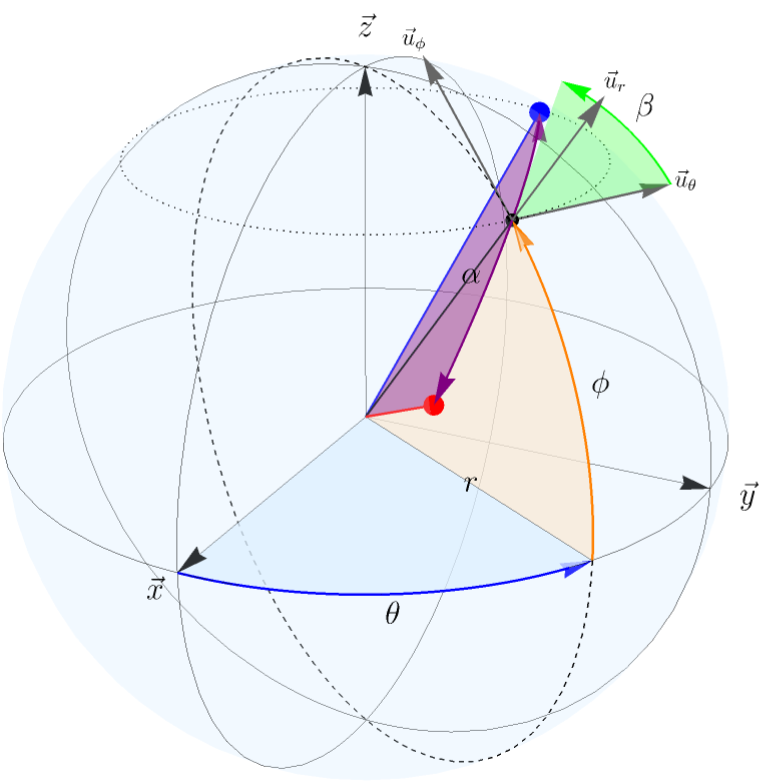Stereo Encoder
This tool encodes a stereo source in an Ambisonic sound scene up to a maximal degree $L$. See the encoder tool for details on point source and plane wave encoding details. The left and right channels are positionned in space on a sphere of radius $r$ as shown on

in Fig.1. The user chooses a position $(r, \theta, \phi)$ (the black dot in Fig.1). The width of the stereo source is then set with the angle $\alpha$ (in purple on Fig.1). This is the angle between the two directions of the left channel (blue dot in Fig.1) and the right channel (red dot in Fig.1), symmetrically distributed with respect to the direction $(\theta, \phi)$. Thus, the left channel is at an angle of $\alpha/2$ with respect to the direction of the black point, as is the right channel. Finally the roll angle, noted $\beta$, (in green in the Fig.1 allows to turn the stereo source around the vector $\vec{u}_r$. For a source width $\alpha = 0^\circ$ or $\alpha = 360^\circ$ the left and right channels are superimposed and the angle $\beta$ has no influence.
Compilation parameters
L: maximal Spherical Harmonics degree (i.e., Ambisonics order), $L > 0$,doppler: Possibility of Doppler effect :0=> No,1=> Yes.
Inputs / Outputs
- Inputs: $2$
- Outputs: $(L+1)^2$
User Interface
For the $i$-th source:
| Element | OSC | Min value | Max value |
|---|---|---|---|
| Gain (dB) | gain |
-20 | 20 |
Doppler (doppler = 1) |
doppler_i |
0 | 1 |
| Radius $r$ (m) | radius |
0.75 | 50 |
| Azimuth $\theta$ ($^\circ$) | azimuth |
-180 | 180 |
| Elevation $\phi$ ($^\circ$) | elevation |
-90 | 90 |
| Width $\alpha$ ($^\circ$) | width |
0 | 360 |
| Roll $\beta$ ($^\circ$) | roll |
-180 | 180 |
| Doppler | doppler |
0 | 1 |